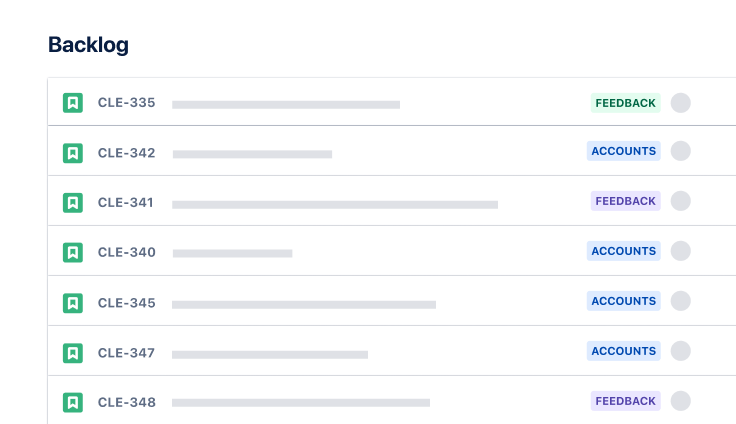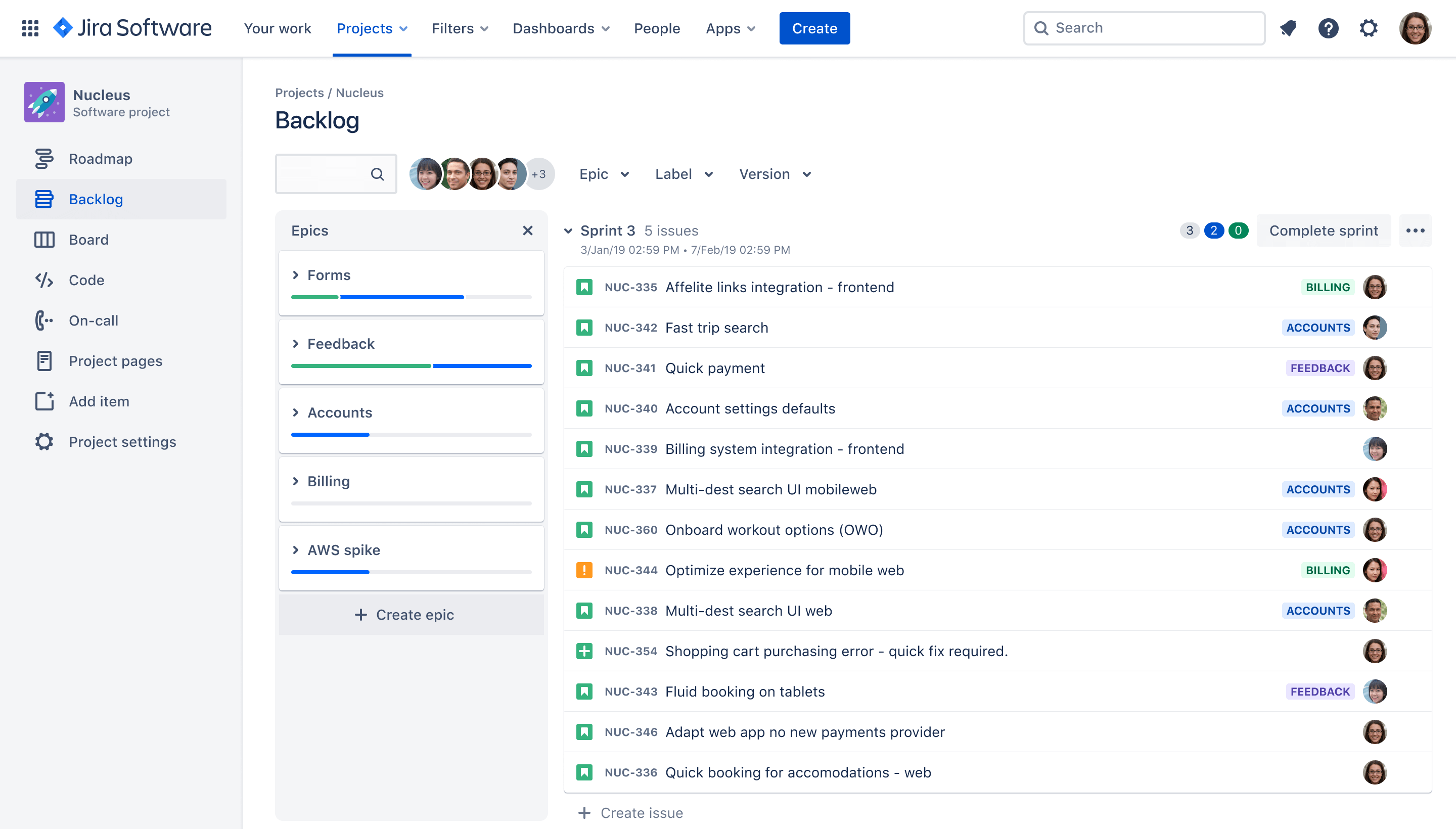
Scrum backlog template
The Scrum backlog template helps Agile teams organize and prioritize tasks, improving time estimates and enhancing understanding of dependencies and blockers.
Область применения
управление проектами
Разработка программного обеспечения
Основные возможности
Планирование заданий
Расстановка приоритетов
Управление конвейером
What is a scrum backlog template?
Improved organization
The scrum backlog template in Jira Software provides agile teams with a systematic and reusable approach for organizing the overall project and the focused work in each sprint. It helps capture all necessary features and supporting information, such as user stories and requirements, in a consistent, structured, and centralized manner.
Prioritized list of tasks
Prioritizing and estimating tasks is simple with the Scrum backlog template. Agile teams can quickly move high-priority tasks to the top, identify dependencies, and spot potential roadblocks. Reprioritization is simple, and dependencies automatically move to provide a clear picture of the work.
Что входит в шаблон бэклога Scrum?
Бэклог продукта
The scrum product backlog template includes all the work for a project, including product backlogs and sprints. Projects often have multiple product backlogs for different focus areas, such as new features, user experience, or product optimization. Teams identify and prioritize tasks within each product backlog. The work begins once they incorporate them into Scrum sprints.
Teams can include relevant information, such as specifications, user stories, and value. Prioritize items on the product backlogs based on business value and project goals. This allows teams to achieve greater efficiency when creating the sprint backlog, also known as an iteration.
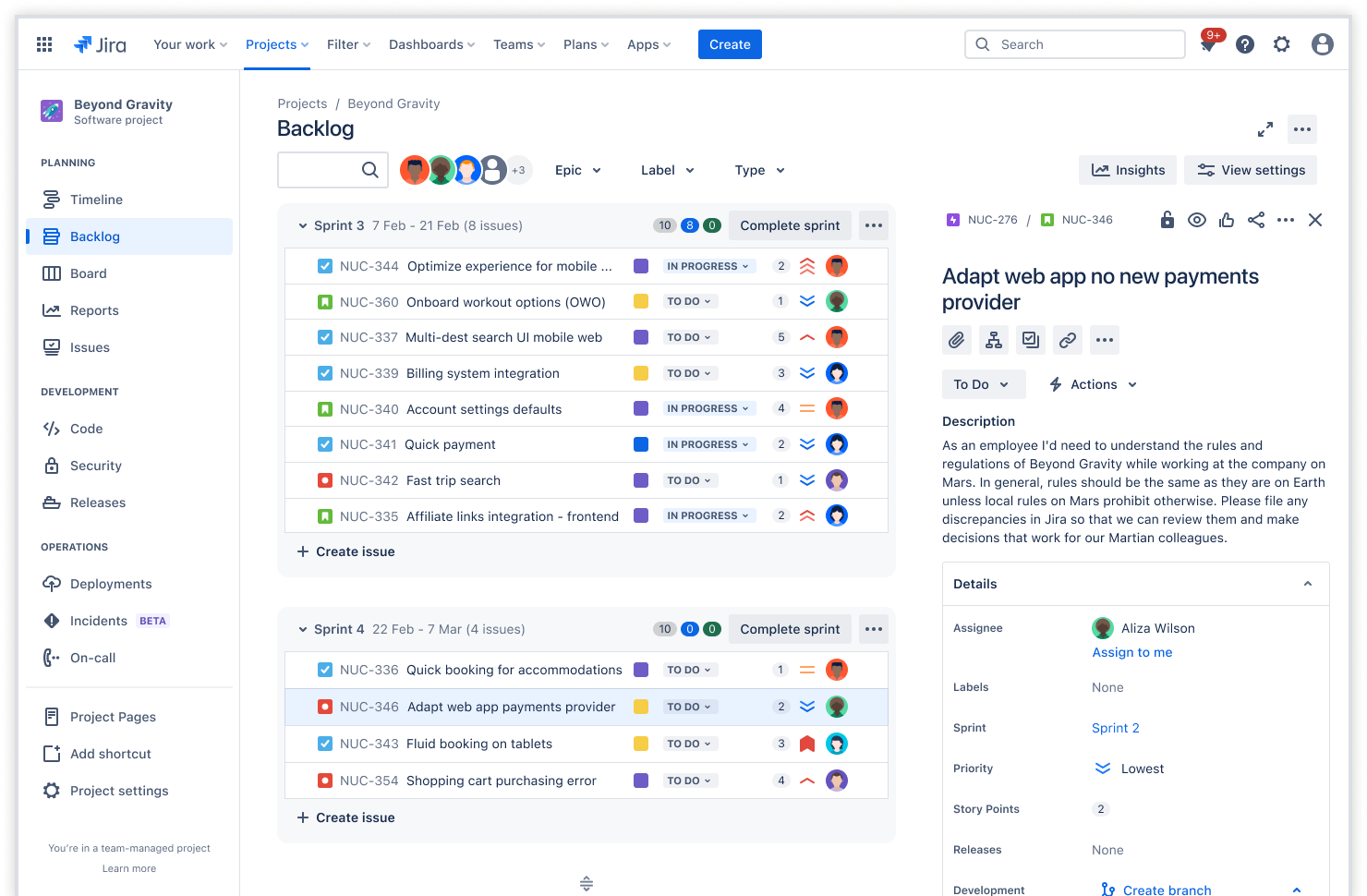
Бэклог спринта
Sprints are focused sets of tasks that deliver an incremental result. Many teams also identify sprints with milestones. The scrum sprint backlog template includes sprint planning.
Бэклог спринта — это часть бэклога продукта, состоящая из заданий, над которыми участники уже работают или к которым собираются приступить в ближайшее время. Разбив спринт на мелкие задания, команды могут быстрее завершить его и выявить потенциальные препятствия.
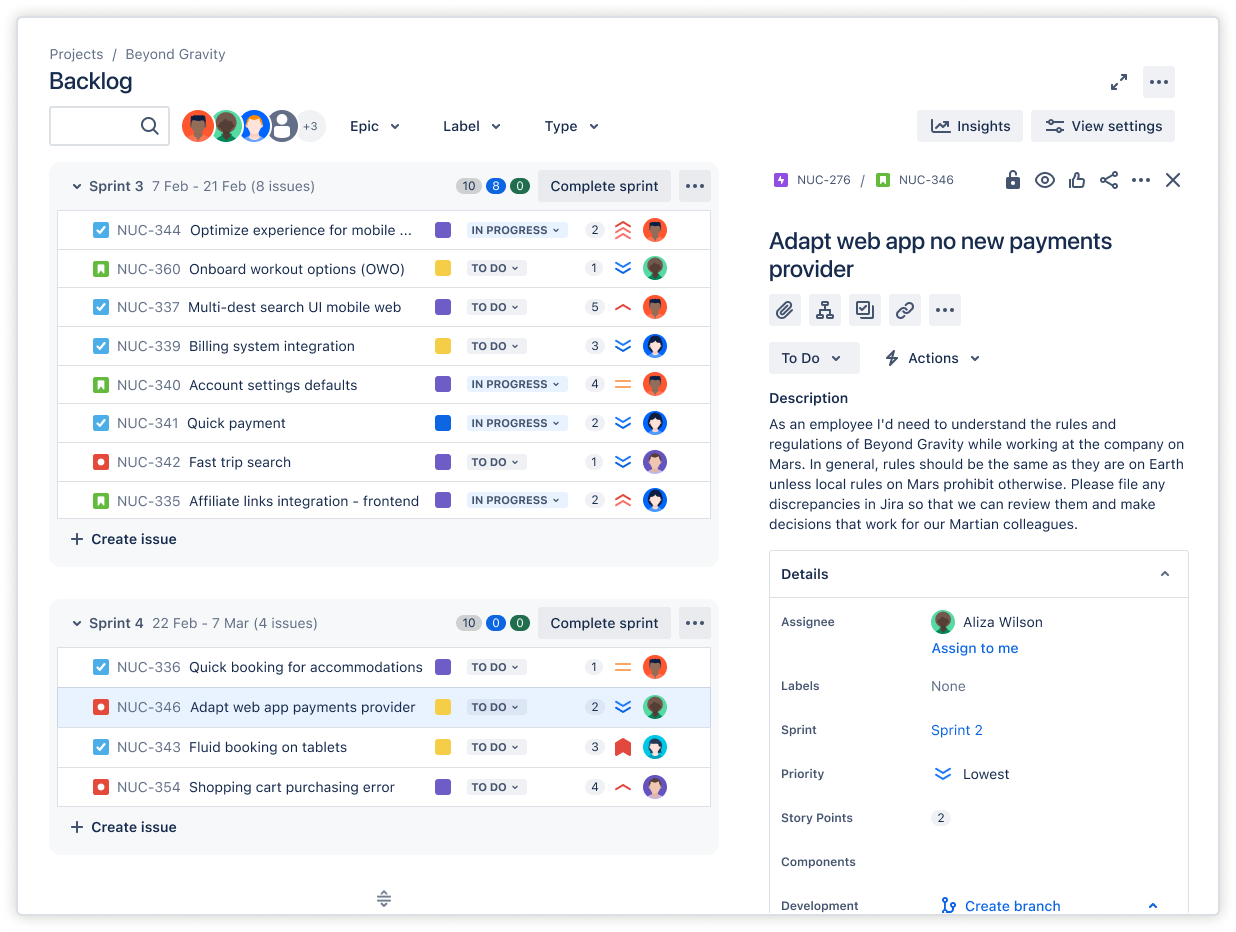
Режим хронологии
Представление хронологии помогает командам и заинтересованным сторонам быть в курсе приближающихся сроков и связанных с ними заданий. Добавляя эпики и сопоставляя рабочие задачи, можно получить четкое представление о зависимостях и о том, как задания сочетаются друг с другом. А централизованное интерактивное представление упрощает обнаружение конфликтов, дублирующихся заданий, ограничений по ресурсам и других потенциальных препятствий.
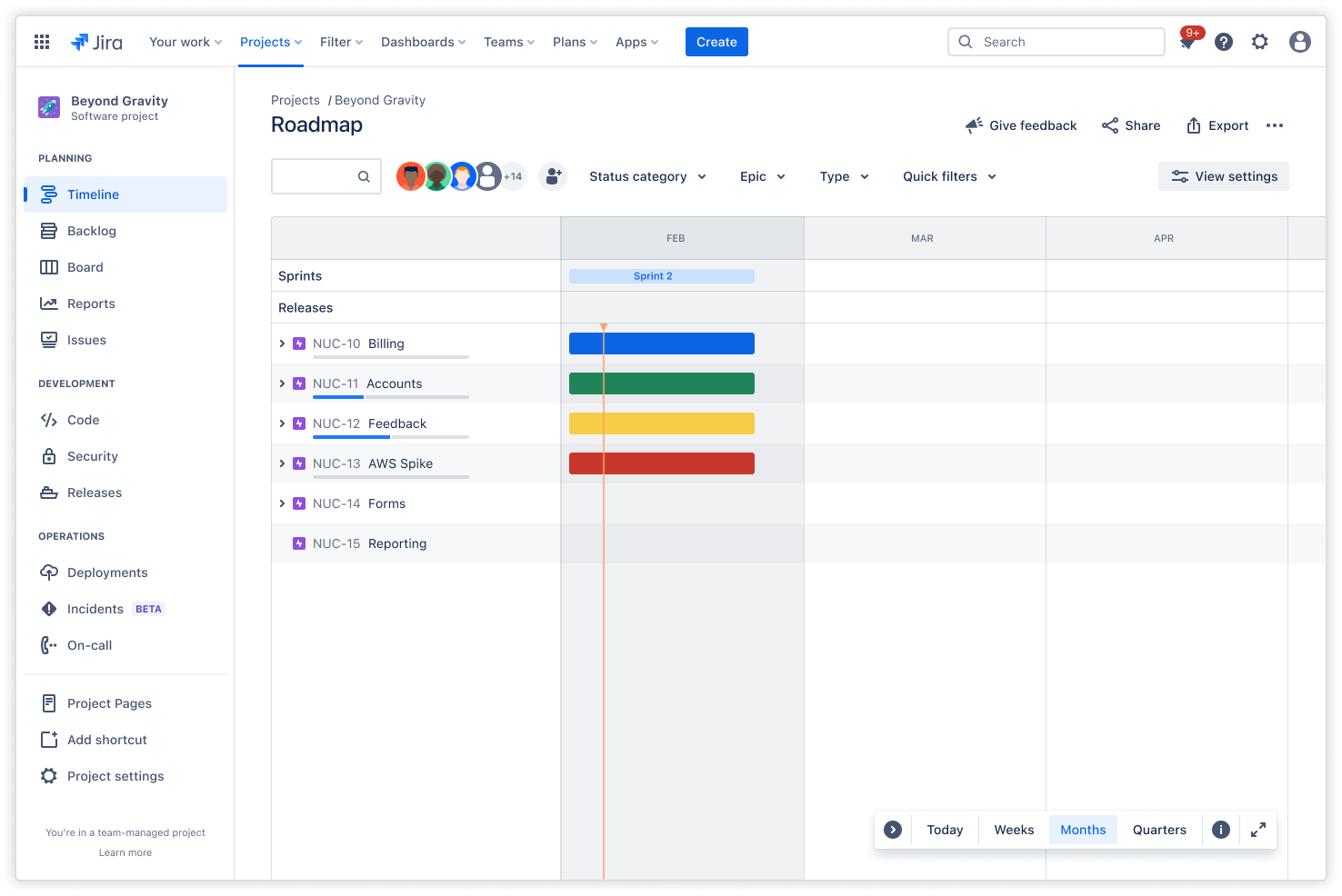
Scrum-доски
Scrum boards transform tasks into manageable visual representations of the entire project. A visual presentation helps Agile teams recognize large, complex depictions of work and break them down into smaller, more manageable tasks. This helps eliminate surprises, keeps the team focused on the sprint, and ultimately ship faster.
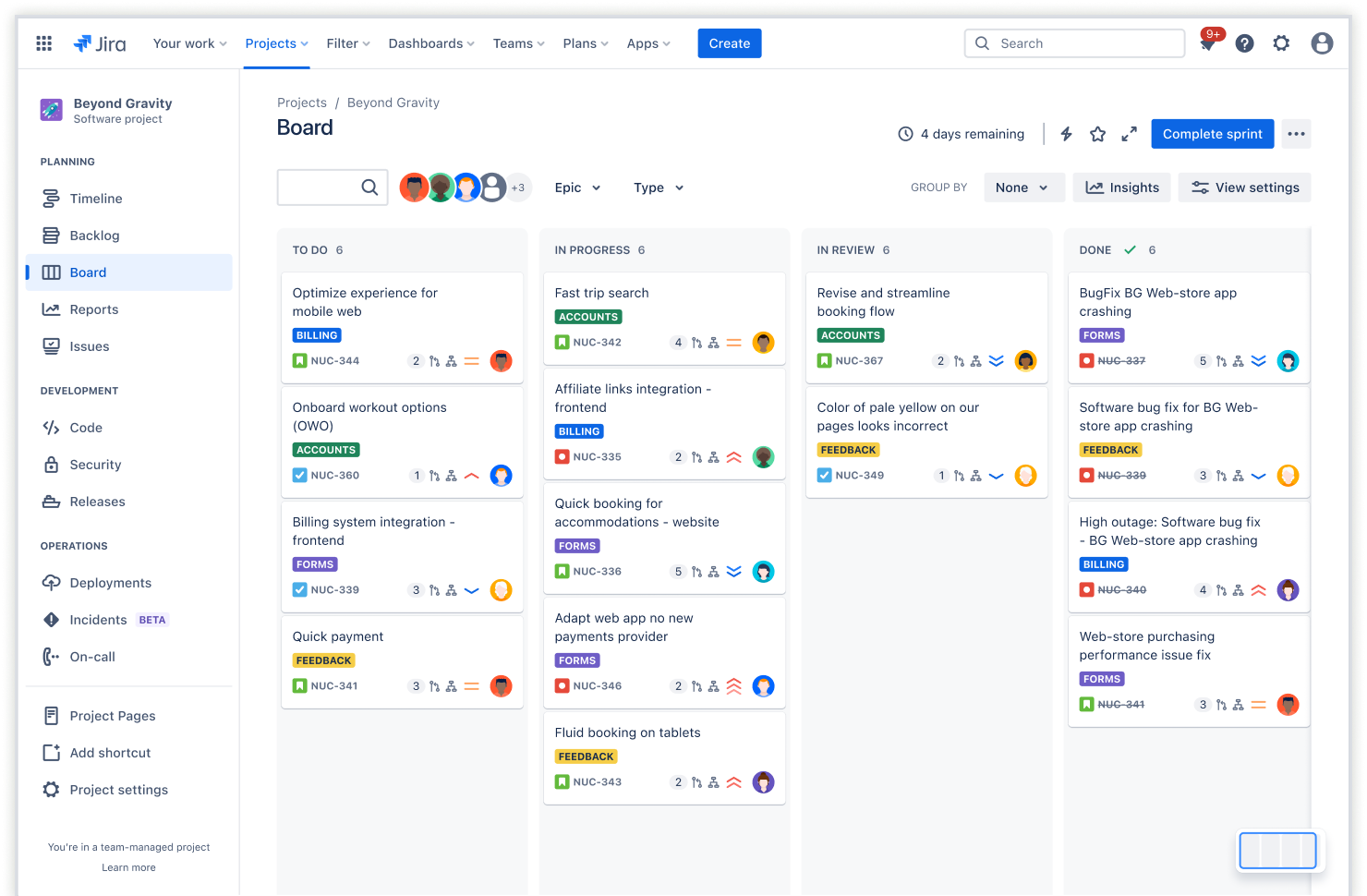
Начало работы с шаблоном бэклога Scrum
В этом шаблоне используется Jira, благодаря чему команда сможет быстрее выполнять спринты.
